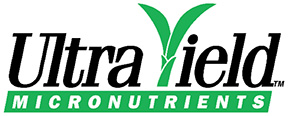ABSTRACT
Water-soluble Zn (WsZn) levels in granular Zn fertilizers are reported to be a reliable estimate of fertilizer Zn availability to crops. Our objectives were to evaluate the immediate and residual effects of four commercial Zn fertilizers with WsZn ranging from 14 to 98% on the growth, Zn nutrition, and yield of field-grown flood-irrigated rice (Oryza sativa L.). Mehlich-3 extractable Zn response to Zn fertilization was also evaluated. Zinc fertilizers were applied at rates ranging from 2.3 to 18.0 kg Zn ha\u00011 at two locations in 2000. The immediate and residual effects of Zn fertilizer treatments on rice growth were measured in 2000 and 2001, respectively. Dry matter, tissue Zn concentration, and grain yield were increased from application of 13.5 kg tioned the legitimacy of these studies since they were Zn ha\u00011 for both sites during both years, but the magnitude of response varied between locations. During the first year, at both locations, whole-seedling Zn concentrations increased linearly as Zn rate increased and was affected by Zn source. Tissue Zn concentration generally declined as the fertilizer WsZn level declined. Zinc rate had the greatest influence on grain yields with near maximum yield produced when u00029 kg Zn ha u00011 was applied. During the second year, tissue Zn concentration and yield increased linearly or nonlinearly, depending on location, as Zn rate increased and were not affected by Zn source. During the first year, Zn source and rate influenced early season growth and Zn concentrations, but grain yield, Mehlich-3 soil Zn, and the residual benefits of Zn fertilization were affected only by application rate.
SUMMARY
Our field data supported research conclusions from several greenhouse studies, which showed that granular Zn Fertilizer source might influence the growth and Zn nutrition of the crop grown immediately following Zn fertilization. Zinc fertilizer source affected early season rice growth and Zn nutrition, but not grain yield, only for the rice crop grown immediately after fertilization. The residual benefits of Zn fertilization on rice growth, Zn nutrition, and grain yield were not affected by Zn fertilizer source, but were affected by Zn application rate. Apparently, the chemical reactions between Zn fertilizers and soil are sufficiently complete by 1 yr after fertilization so that soil properties, rather than fertilizer properties, control the residual Zn availability to plants, which can be accounted for through soil testing. The selection of an appropriate Zn source is most critical only for the crop to be grown the same year that Zn fertilizer is applied. All four of the Zn sources can be considered sufficient fertilizers so long as the proper Zn rate is applied. Growers should be made aware through university recommendations that granular Zn fertilizers with low WsZn levels may not contain sufficient immediately available Zn to maximize seedling growth and Zn nutrition, especially if low rates of Zn are broadcast applied. Because fertilizer WsZn level has consistently shown to be a reliable indicator of the immediately available Zn and analysis for fertilizer WsZn can be performed by most laboratories for a modest cost, fertilizer use guidelines can be established for the commercially available Zn fertilizers for any given region. Fertilization guidelines need not discriminate against the use of fertilizers with low (u000440 u00e2 u20ac u201c50 %) WsZn levels on non-calcareous, Zn-deficient soils, but should make growers aware of the potential advantages and disadvantages of the available fertilizers. Recomtants, mendations can (i) identify fertilizer sources that have high levels of WsZn and will provide sufficient plant available Zn at the recommended Zn application rates WsZn and suggest rate adjustments (i.e., increases) that will provide sufficient plant-available Zn for the crop to be grown. The retail prices and recommended application rates of commercially available Zn fertilizers will provide growers with greater options to establish sound Zn fertilization programs that provide adequate Zn nutrition to crops on the short- and long-terms. For Zn sources with low WsZn content, higher Zn application rates would need to be applied to achieve similar tissue concentrations in the year of application as a source with a high level of WsZn.
Field and greenhouse research studies are usually conducted on Zn-deficient soils, however they may not always represent the most Zn-deficient soils or duplicate other environmental (i.e., cool temperatures) and pest induced (i.e., inhibited root growth and root pruning)stresses that can occur in commercial production fields. Thus, the fertilizer sources or source and rate combinations that provide superior nutrient availability should be recommended so that maximum crop growth and yield potential can be realized.
